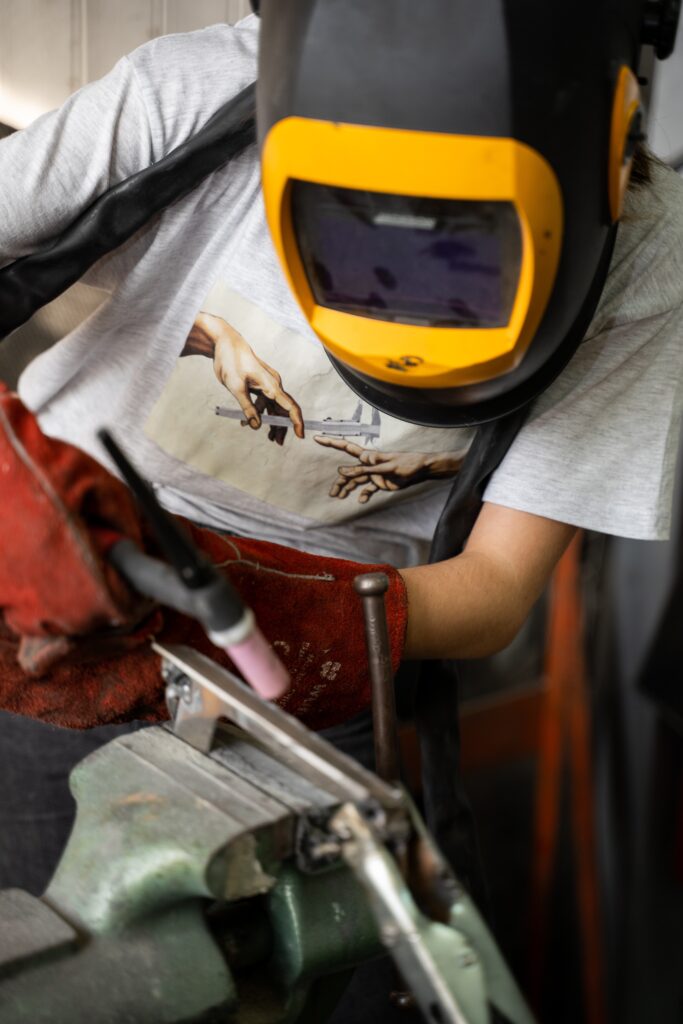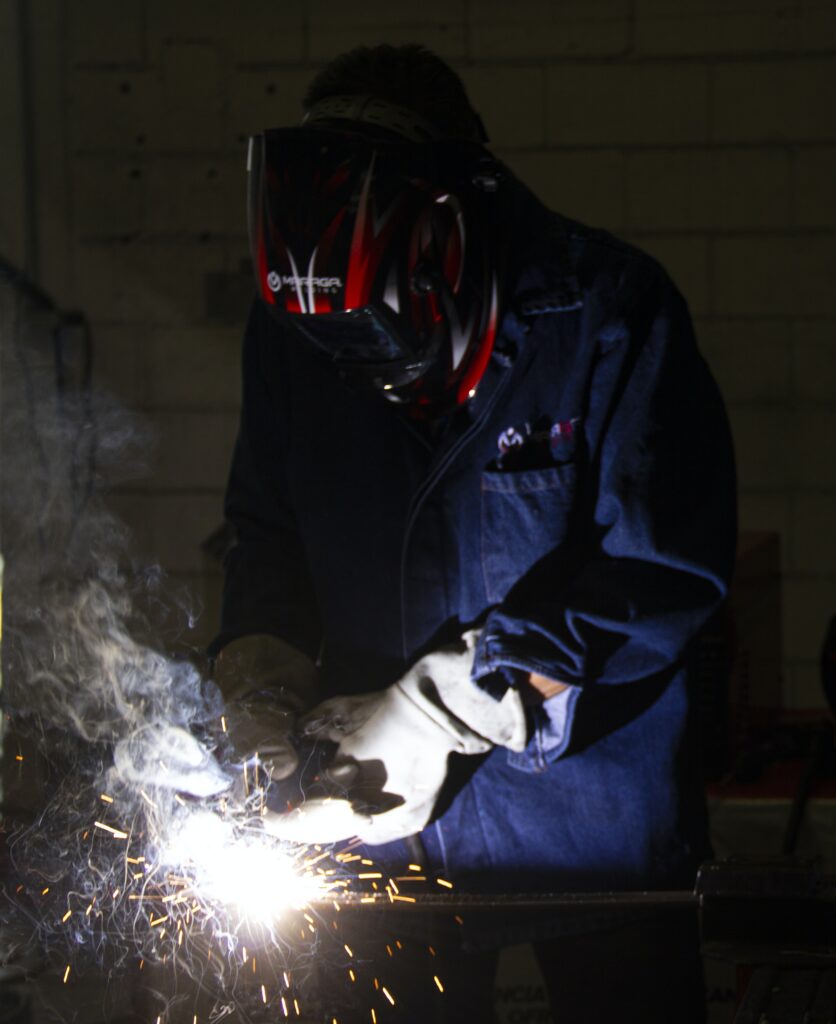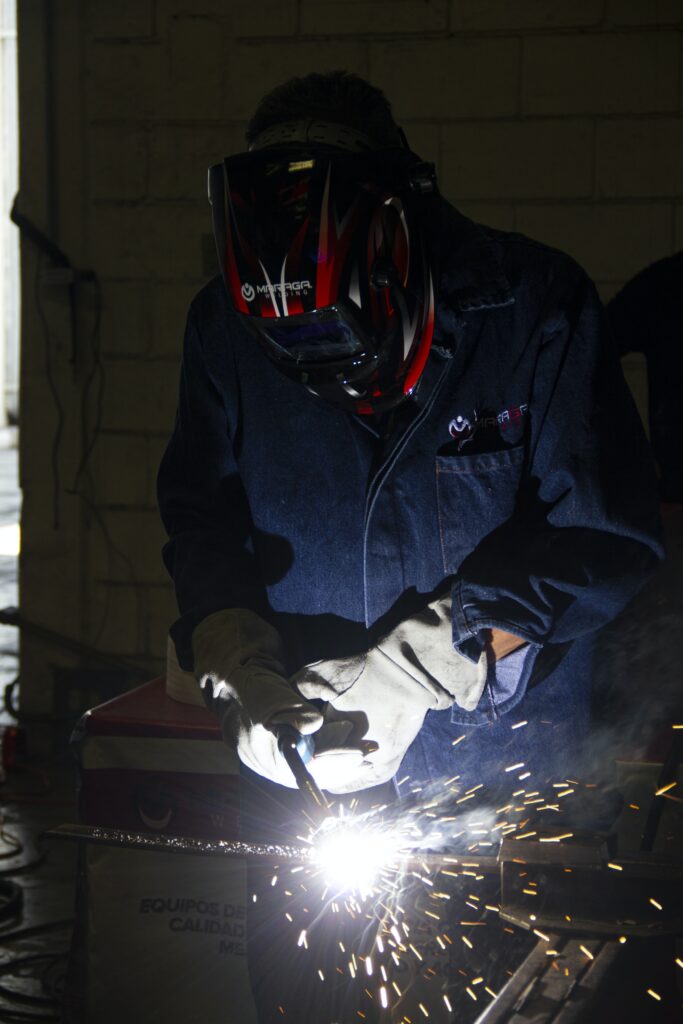As someone eager to pursue a career in welding, your curiosity about apprenticeship duration is perfectly normal. The budding metalworker in you will find great value in our informative write-up about “How Long Is A welding apprenticeship.” This resource unlocks the ins and outs of a welding apprenticeship, offering a concise answer to its duration along with valuable insights about the journey you’re setting off upon. It’s ready to feed your curiosity, demystify your concerns, and help set practical expectations for your exciting career path. Let’s walk this illuminating path together as you step boldly into the world of welding.
Understanding Welding Apprenticeships
Definition of a welding apprenticeship
A welding apprenticeship is a structured and formal training program where you, the apprentice, learn to master the art of welding under the supervision of an experienced craftsman. Consider it like a real-world university education where you pay your tuition in the form of time and hard work, not tuition fees. You’ll spend a portion of your time taking theoretical classes, usually at a local technical institution, while the majority of your time will be devoted to on-the-job training.
Typical tasks of a welding apprentice
As a welding apprentice, you’ll be doing a lot more than just watching experienced welders at work. You’ll be involved in a variety of tasks, from learning to accurately interpret and implement blueprint designs, to adjusting welding machines for optimal performance. Not only that, you’ll have hands-on experience with various welding methods, and you’ll learn to apply the right techniques for the right materials.
Importance of welding apprenticeships
Welding apprenticeships are crucial for a number of reasons. Unlike other vocations, welding requires an extensive amount of hands-on experience to reach a competent level of ability. Welding isn’t just about joining two pieces of metal together; it’s about doing it safely, efficiently, and in line with specific standards. An apprenticeship will build up your skills, teach you safe practices, and provide you with the extensive practice you need to feel confident in your welding ability.
Length of Welding Apprenticeships
Average duration of welding apprenticeships
“How long is a welding apprenticeship?” is a common question you might ask. Typically, apprenticeships range between three to five years, although this can vary depending on a few factors. During this period, you’ll divide your time between theoretical classroom learning and practical, hands-on experience.
Factors that influence the length of an apprenticeship
The complexity and specifications of the welding processes you’ll be learning influence the length of your apprenticeship. Additionally, your previous experience and learning pace can also affect how long your apprenticeship lasts. Some individuals may also extend their apprenticeships to explore and specialize in more areas.
Possible variations in apprenticeship duration from country to country
There can be variations in the duration of apprenticeships between different countries. Different nations might place more emphasis on specific kinds of welding techniques, or have different laws and regulations governing the industry. Therefore, it’s essential to inquire about the expected length of a welding apprenticeship in your region before signing up.

Preparation for Welding Apprenticeships
Basic qualifications for a welding apprenticeship
Before you enroll in a welding apprenticeship, make sure you have a fundamental understanding of math and science and are physically fit. GED or high school qualifications are usually required. Additionally, possessing an ability to follow detailed instructions, having a natural aptitude for practical work, and demonstrating excellent hand-eye coordination are typically desired.
Expectations during a welding apprenticeship
As you embark on a welding apprenticeship, you should expect to commit to full-time hours. Your duties will blend practical on-the-job training with classroom-based learning. You’ll be expected to maintain a safe working environment and deliver high-quality work, using your developing skill set. Over time, you will assume more responsibilities as you gain proficiency.
Ideal qualities of a welding apprentice
As an apprentice, your commitment to learning, reliability, meticulous attention to detail and organic problem-solving ability will serve you well. A good welding apprentice is a team player who respects workplace safety and appreciates that effective welding is key to the integrity of the finished product.
Stages of Welding Apprenticeships
Introduction to welding techniques
Your apprenticeship will start with an introduction to various welding techniques. You’ll learn about different welding machines, materials, and procedures. You’ll begin practicing basic welding techniques, and gradually, move on to more complex tasks.
Safety training
Welding can be hazardous if not done correctly. Therefore, safety training is an integral part of your apprenticeship. You’ll learn about the potential dangers of welding and how to avoid them. Additionally, you’ll be trained in the correct usage of personal protective equipment and procedures to be followed in case of an emergency.
Specializations in welding
Eventually, your apprenticeship will expose you to various welding specializations, allowing you to choose one or more areas to further specialize in. You could choose to focus on a particular kind of material, welding process, or industry, depending on what interests you the most.
Final evaluation and certification
Upon completion of your apprenticeship, you will be evaluated on the basis of your practical skill level and theoretical knowledge. Once you pass this final evaluation, you will receive your certification. This certificate officially validates your abilities as a professional welder and opens up numerous job opportunities for you.

Types of Welding Apprenticeships
Metal Inert Gas (MIG) welding
MIG welding is one of the most common types of welding, and a MIG welding apprenticeship will teach you to use a feed wire which acts as an electrode to join two pieces of metal.
Tungsten Inert Gas (TIG) welding
TIG welding involves using a tungsten electrode. It’s often used for thin pieces of stainless steel and non-ferrous metals. A TIG welding apprenticeship will have you mastering this technique, and refining your weld for strength and aesthetics.
Stick welding
Stick welding, or Shielded Metal Arc Welding (SMAW), is a manual arc welding process that’s prevalent in construction and repair work. An apprenticeship in stick welding will add this handy and versatile skill to your repertoire.
Comparison of different types of welding apprenticeships
Each type of welding apprenticeship offers its own unique set of skills and knowledge. The right one for you depends on your personal interests, as well as your career goals. Consider the industries you aspire to work in and the type of work you enjoy doing before deciding which apprenticeship to pursue.
Benefits of Welding Apprenticeships
Gaining practical experience
One of the major benefits of a welding apprenticeship is the practical experience you gain. Unlike traditional education settings where you mostly learn in a classroom, an apprenticeship gives you the unique opportunity to learn on the job.
Receiving mentorship from experienced welders
During your apprenticeship, you’ll work under experienced welders. These professionals can guide you through the intricacies of welding in a way that textbooks simply cannot. They will provide you with precious tips and advice that will be invaluable in your career.
Certification upon completion
Once you complete your apprenticeship, you’ll receive a certification that proves you are skilled in the art of welding. This certification significantly assists career progression and opens up numerous job opportunities.
Opportunities for job placements
Many apprentices are offered jobs from the companies they trained with. Even if this isn’t the case, the practical skills and experiences you gain during an apprenticeship make you a desirable candidate in the job market.

Challenges in Welding Apprenticeships
Potential safety risks
welding carries a certain level of risk, including burns, radiation exposure, and eye damage. Proper safety training and always adhering to safety rules can minimize these risks.
Physical demands of welding
Welding is physically demanding work. It requires strength and stamina, and often you’ll find yourself working in cramped conditions or awkward positions. It’s important to maintain good physical health and flexibility.
Time commitment for apprenticeship
An apprenticeship requires a significant time commitment, typically full-time hours for up to five years. If you’re juggling other responsibilities, this can be a significant challenge.
Career Opportunities After Welding Apprenticeships
Job prospects post-apprenticeship
The demand for skilled welders is always high. After completing your apprenticeship and receiving your certification, you may find opportunities in industries such as construction, automotive work, shipbuilding, and many more.
Industry sectors looking for certified welders
Certified welders are sought after in various industry sectors like oil and gas, aeronautics, construction, and shipbuilding. Each sector has its unique welding needs, providing opportunities to work on exciting and varied projects.
Career progression for certified welders
With your certificate in hand, you can prove to prospective employers that you possess advanced welding skills. As you gain experience, you can take on roles with more responsibilities, such as supervisory positions or specialized welding roles.
Financial Aspects of Welding Apprenticeships
Costs involved in a welding apprenticeship
While you usually won’t be paying tuition for a welding apprenticeship, there are other costs to consider. These can include work supplies, tools, commuting, or even relocation in some cases.
Possibility of financial aid
Financial aid is available for those who need it to cover the costs of an apprenticeship. This assistance can come in the form of grants, scholarships, or even loans.
Wages during the apprenticeship
As an apprentice, you will earn a wage, although it is typically lower than a fully trained welder. As you gain skills and progress through your apprenticeship, there’s potential for your wage to increase.
Income potential upon completion
Once you complete your apprenticeship and become a certified welder, your income can significantly increase. Skilled welders are highly valued and can command a good wage.
Alternatives to Welding Apprenticeships
Welding courses and vocational training
If a traditional apprenticeship doesn’t seem like the right fit for you, there are other routes to becoming a welder. Vocational training or welding courses at technical school are alternative options that provide more flexible schedules.
Self-taught welding skills
Some people choose to teach themselves welding. This option requires a lot of self-discipline and initiative but can work for those who prefer to learn independently or at their own pace.
Comparison between apprenticeships and alternatives
While alternatives to apprenticeships do exist, it’s important to remember that an apprenticeship provides a level of practical experience that is hard to match. Where vocational training and self-teaching provide mainly theoretical knowledge, an apprenticeship ensures you apply that knowledge in a real-world setting under expert supervision. While the path you choose depends on your circumstances and learning style, apprenticeships certainly offer unique advantages.
